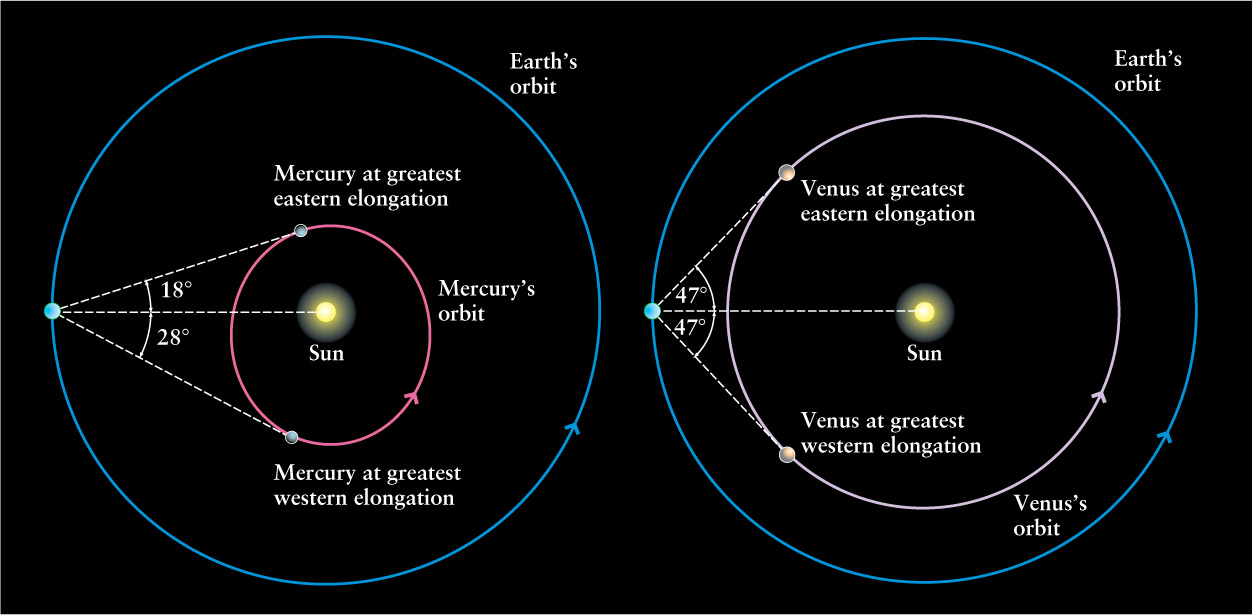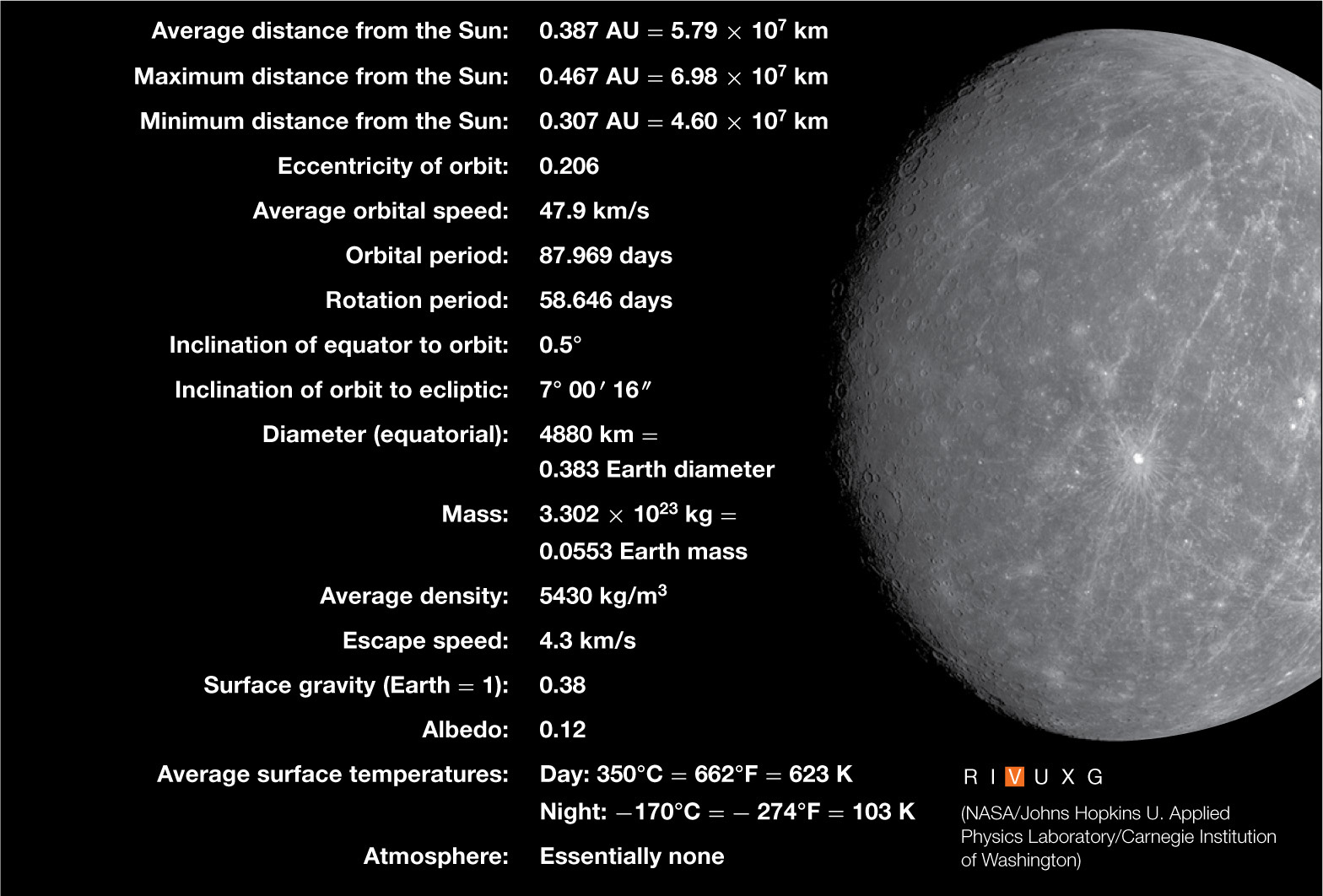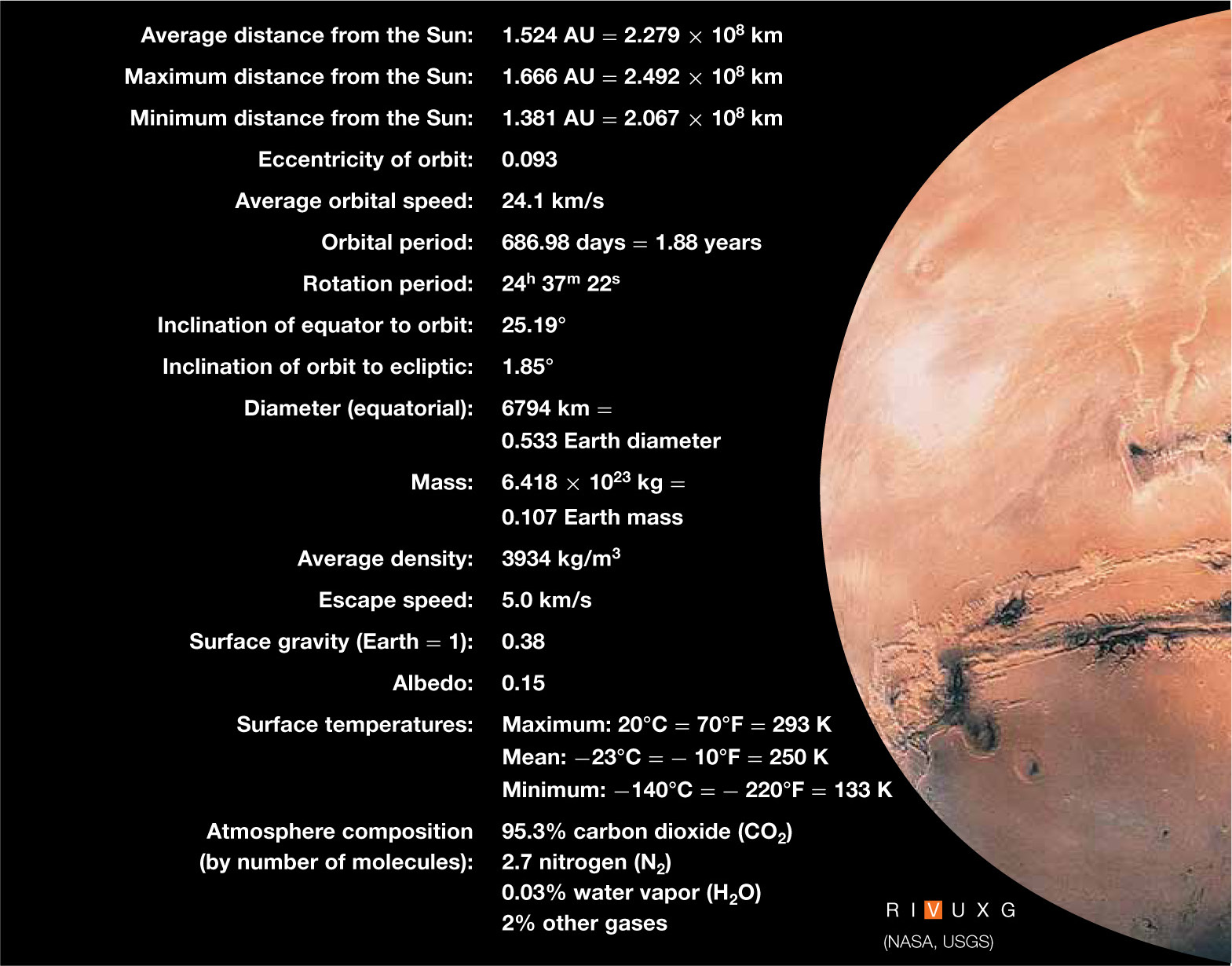11-1 Mercury, Venus, and Mars can all be seen with the naked eye
Viewing Mercury is difficult because it is so close to the Sun; Venus is easier to see but covered with clouds; Mars is best seen at opposition
At various times Mercury, Venus, and Mars are among the brightest objects in the sky. At their greatest brilliance, each of these planets appears brighter than any star, which is why they have been known since ancient times and why their motions played a role in the religious beliefs of many ancient cultures.
Mercury and Venus are inferior planets, orbiting closer to the Sun than Earth. As a result, Mercury and Venus never appear very far from the Sun in our sky (Figure 11-1). Table 11-1 and Table 11-2 summarize some basic information about these planets and their orbits.

 The Orbits of Mercury and Venus Mercury moves around the Sun every 88 days in a rather eccentric orbit. As seen from Earth, the angle between Mercury and the Sun at greatest eastern or western elongation can be as large as 28° (when Mercury is near aphelion) or as small as 18° (near perihelion). By contrast, Venus follows a larger, nearly circular orbit with a 224.7-day period. The angle between Venus and the Sun at eastern or western elongation is 47°.
The Orbits of Mercury and Venus Mercury moves around the Sun every 88 days in a rather eccentric orbit. As seen from Earth, the angle between Mercury and the Sun at greatest eastern or western elongation can be as large as 28° (when Mercury is near aphelion) or as small as 18° (near perihelion). By contrast, Venus follows a larger, nearly circular orbit with a 224.7-day period. The angle between Venus and the Sun at eastern or western elongation is 47°.
TABLE 11-1 MERCURY DATA

TABLE 11-2 VENUS DATA

We get the best view of either Mercury or Venus when it appears as far from the Sun in the sky as it can be, at its greatest eastern or western elongation (Section 4-2). Of course, these planets cannot be viewed with the naked eye unless the Sun is below the horizon. On dates near its greatest eastern elongation, Mercury or Venus appears after sunset over the western horizon as an “evening star.” On dates near its greatest western elongation, Mercury or Venus appears as a “morning star” that rises before the Sun in the eastern sky.
Unlike Mercury and Venus, Mars is a superior planet, which means that Mars has a semimajor axis larger than Earth’s orbit. As Table 11-3 shows, the Martian orbital semimajor axis is a = 1.524 AU. Hence, Mars and the Sun are sometimes on opposite sides of the sky as seen from Earth—that is when Mars is at opposition (see Figure 4-6)—and Mars appears high in our night sky.
TABLE 11-3 MARS DATA

Because Mercury’s orbit is so close to the Sun, its maximum elongation is only 28° and it is quite difficult to observe. However, the orbit of Venus is about twice the size of Mercury’s orbit. As a result, Venus can be seen about 47° away from the Sun and is easy to observe.